Pyrethrum is a garden perennial who is often called the Dalmatian chamomile, a chammer, a kidnapper. Such a comparison was arisen due to the daishemoid design of the flower: a cereal yellow middle, framed by a variety of petals. In gardening, culture occupies a special place because it is characterized by increased decorativeness. The variety of shapes and colors of his inflorescences amazes: white, purple, dark red, terry or simple ... Culture is not good in caring, it stands for a long time in a cut, besides, it is capable of scareting its aroma of insects. About how to easily grow pyrethrums on the site. Talk in this article.
Pyrethrum, culture description
Pyrethrums - a plant from the genus of grassy perennials of the family complex. The name of Pyrethrum has a scientific explanation and comes from Greek Pyretos ("Fever"). The name is associated with the presence of a biologically active component of the active component - partland, - manifesting the therapeutic effect.
There are about a hundred species with pyrethrum with the following common features:
- At high flower shoots, inflorescences and baskets of white, gentle pink, bright red, raspberry color are formed. Flower diameter 6.5-9 cm.
- The core of the flower is much larger than the chamomile, and all species are painted in intense yellow.
- In nature, the daisy breeds self-sowing, blooms the next year, the period of flowering is long - from June to late September.
- In the culture, Pyrethrum does not live for a long time (no longer than six years), so often grown as an annual. Its seeds quickly give strong shoots, which are easier to plant annually than fighting the life of an old plant.
- Chamomile stems Pyrethrums. Personal, branched. In different species, their height ranges from 30 to 70 cm. But there are also dwarf varieties of pyrethrum height up to 10 cm.
- The foliage of Pyrerum is bright green, focused on the bottom of the escape, the form of a sheet is permanent.
- Natural agricultural area of \u200b\u200bPyrerum - Eurasia and North America.
Views and beautiful varieties of pyrethrum
The varietal variety of pyrethrum is represented by large terry buds, and gentle flowers-pompoms, and complex flowers with a multi-tiered rosette of petals like chrysanthemum. All types and varieties are distinguished by different shades of petals, their length and duration of flowering. Consider species suitable for cultivation in culture and their varieties.
Pyrethrum Girl (Tanacetum, Pijma) - Uncleant in culture, leaving from the southern part of Europe. The above-ground portion is represented by a branched bush to 55 cm. Light green color of leaves is diluted with a yellowish tide. Inflorescences up to 4 cm in diameter, externally resemble baskets, there are simple and terry. Color color white or gently yellow. It takes enough blooms on the third month after sowing until the last days of August. Among the varieties decorative differ:
- "Gold Bol" - the sophisticated stem does not exceed 30 cm. Spherical inflorescences - baskets (3-4 cm in diameter) are painted in bright yellow color. Grown on a slice or in group landings;
- "White White" - this pyrethrum has a terry-sized flowers, during flowering, white lace clouds resemble;
- SHNEUBAL is a squat bush height 20-22 cm. White flowers are collected in delicate inflorescences.
Pyrethrum Pink(Other name Persian chamomile) is a view with high decorativeness. At one blossom, up to five baskets 6 cm each, the petals of all shades of pink are tied. The height of the type is 50-70 cm, so it is better to plant him in the center of the flower. Myster as possible looks like pink pyrethrum, if it is sung by numerous groups. The view has a lot of hybrid forms with terry flowers up to 12 cm in the diameter. Flowering lasts 30 days. Culture is grown as a two-year plant. Famous varieties:
- Robinson - Gybrid color may be dim pink, bright red, snow-white;
- "James Kelver" - Pyrethrum has red inflorescences;
- "Brand" is a rich-grade variety with thick inflorescences of the scarlet shade;
- Vanessa is a variety with large terry inflorescences of all shades of pink;
- "Hybrid" - the range from all sorts of Pyrethrum Pink.
Shieldpyrethrum - A long-term view that strongly resembling a field chamomile. It has a well-developed root system, single stalks and grow up to 120 cm in height. On one plant during flowering period there are many small floral baskets. They are collected in loose thyroid inflorescences that bloom in June.
Pyrethrum largest - Caucasian perennial. White small flowers are grouped into large shield inflorescences. At the final flowering stage, Pyrethrum acquires a red-brown tint. Varietary varieties are not derived.
Pyrethrum beautiful - The average view with low stems, which are only occasionally covered with inconspicuous foliage. Pirethrum baskets produces single, tongue flowers, dairy petals. Only the "Caucasian chamomile" can be distinguished from the Caucasian chamomile with white petals with a length of 2-2.5 cm. Common in Siberia, Mongolia, North China.
Choosing the soil and places for the landing of Pirethrum
The best place for Pyrethrum is a flat and sunny garden plot without drafts. Moderate shadow is also suitable for growing a daisy. But if daylight light is missing the plant, it will greatly stretch, and completely loses its decorativeness.
Advice! Observation gardeners note that the Dalmatian daisy develops well in the soil, where potatoes and legume cultures have previously cultivated.
To the composition of the soil pyrethrum is not very demanding. The only thing you need to take into account is a good drainage and lack of water stagnation at the roots. The plant is painfully reacting to excess moisture, and if there are groundwater deposits on the site, it is necessary to ensure their discharge.
So that flowering pleases to fully put a flower in a porous black soil or light loam. The soil should be dry, moderately fertile, sufficiently draned, with a neutral pH.
In general, Pyrethrum, the landing in the open soil of which is very simple, will be able to root well and bloom without strict compliance with the requirements described.
Important! If you put a chammer in sour, poor and wetland, he will die quickly.
Pyrethrum, growing from seeds
Culture is grown in two ways: sowing seeds in an open ground or advance landing for seedlings.
In the open soil, the seed material is sown with the arrival of spring after the minor of frosts. To ensure the high germination of pyrethrum seeds soaked in water for a couple of hours. Seeds close to a depth of 3 cm.
In the harsh climatic conditions, gardeners are advised to sow seeds in May, when the soil has already warmed enough. In this period, the seeds are closed to a depth of 6-10 mm.
The one hundred percent germination of the seeds of Pyrethrum does not differ, so it is necessary to sung them. After the shoots are growing, they can be frozen, leaving the distance between the seedlings at 10-12 cm. As a rule, the young piglery tolerates the transplant, so you do not need to be afraid of the dive.
Gardeners use the autumn sowing method of pyrethrum. According to their observations, in this case you can achieve the best germination. Seed seeds in the prepared ground. Then the garden is covered with a subtle layer of humus (1-2 cm).
You can also suck the seeds in the pot, and then in May to plant a stained crop on the flower. You can start sowing in March-April. Seeds are prepared in the same way as to dry out a bed. Then they are distributed according to the moistened soil in containers, top with a layer of soil (2-4 cm). Containers put in bright, not very warm room. If seedlings go too thick, it is divened to individual peat pots.
Before landing in the open ground, seedlings begin to temper. For this, they are gradually involved in street conditions: low temperatures and bright sun. After landing on the flower leaf, the plants are dialed for 3-5 days.
Pyrethrum, Current Care in the Garden
Dalmatian chamomile is a favorite plant of "lazy" gardeners. She does not need care. The only thing that will have to do is glowing weeds while the young plant will not grow up, and it is regularly water.
Pyrethrum watering and mulching
When the pyrethrum planted is fully formed, watering can be reduced. Moisturize the soil will be needed in hot weather or with a long lack of precipitation. And even if the plant does not pour the plant in drought conditions, it will not die. It is simply grinding its flowers, and the flowering period will be reduced.
But overflow is very dangerous for Pyrethrum. In the conditions of high humidity, the root system of the plant quickly boots.
After irrigation, the land in a rustic place should be loosened to create conditions for the penetration of oxygen to the roots. You can mulch pyrethrum if desired. Since weeds near the adult plant do not grow, and no moisture is needed, the mulch is used in exclusively decorative purposes.
Schedule Pirotrum feeder
The best affects the chammer overwhelmed manure. To achieve active bootonization, it is introduced in the spring in the form of mulching or in the fall at the time of the rescue. You can also make a manure throughout the season.
When slowing down the development or delay of flowering, you can feed pyrethrum with complex fertilizers or infusion of a cow.
Pruning and wintering Pyrethrum
Trimming Dalmatian daisies spend after flowering, and then again before wintering. Cutting the color saw is necessary to preserve the decorativeness and control of self-saming. Before the arrival of winter, shoots and flowers are cut off, and then the shelter of Pyrethrum is carried out.
Dalmatian daisy tolerates cold well. Provided that in winter the soil does not freeze below -5⁰, it is not necessary to strengthen the plant. If the winter in the region is too severe, you can cover the pyrethrum ball of fallen foliage, pine branches, hay. Such a shelter allows the plant to survive even in the most severe frosts.
Pyrethrum Diseases and Pest
Dalmatian chamomile is a natural insecticide that protects itself from many pests and neighboring cultures. Sometimes it can dare to damage the plant black fault. A rich spraying of the leaves with soap solution or tobacco infusion will help to get rid of it. If this does not help, you can use any insecticide.
In the conditions of high humidity, pyrethroes are affected by slugs. To get rid of them, you will have to collect all pests manually.
Pyrethrum may be affected by gray rot. Unfortunately, it is impossible to cure the sick plant, so it is uprooted and burned.
Advice! The powder made of dried leaves and pyrethrum colors helps to cure other plants from fungal disease Fuzariosis, as well as get rid of TRIPS, ants, flies, ticks.
Other types of pyrethrum breeding
In addition to the seed method of reproduction, the sealing of Pyrethrum is also used. In summer, young root shoots cut off and stick into a fertile soil. The cuttings are defined, and also covered with a film to preserve soil moisture. When the cuttings are rooted, they are transplanted for a permanent place.
Many types of Pyrerema live up to 6 years, so actively multiply the division of an adult bush. This allows not only to get new bushes, but also contributes to the rejuvenation of the plant.
Once every three years, as soon as Pyrethrum is swinging, the bush dig out, devoured well from the ground, and divided into parts (each must have a socket). Then each bush is seated and care for adults.
The role of Pyrethrum in traditional medicine
The use of a chammer is not limited to decorative purposes. Many species of pyrethrum in medicine are used to prepare drugs against scabies, helminthosis, migraines, diseases of the female reproductive system.
In a complex with other medicinal plants, pyrethroes are shown in hypertension, diseases of the musculoskeletal system. The positive effect of pyrethrum on the course of mental disorders is also proved.
Based on the extract from leaves and pyrethrum colors, poisons are made to destroy bugs. And in cosmetology, the Dalmatian chamomile is used to care for the skin.
Combine Pyrethrum with other cultures
Pyrethrum does not create difficulties, so actively used in landscape design. Garden forms can be successfully grown in numerous single landings, forming round flower beds of the Dalmatian daisy.
Pyrethrum is not against the "flower" neighborhood. It is planted in mixtures, mountaineers, complex group landings. Only you need to pick up the same versatile "neighbors" for him. A successful choice for Pyrethrum will be campaundul, Dolphinium, Felicia.
Growing Pyrethrum, you can decorate your garden unpretentious beauty. She will not deliver a lot of trouble and becomes a real landscape design highlight.

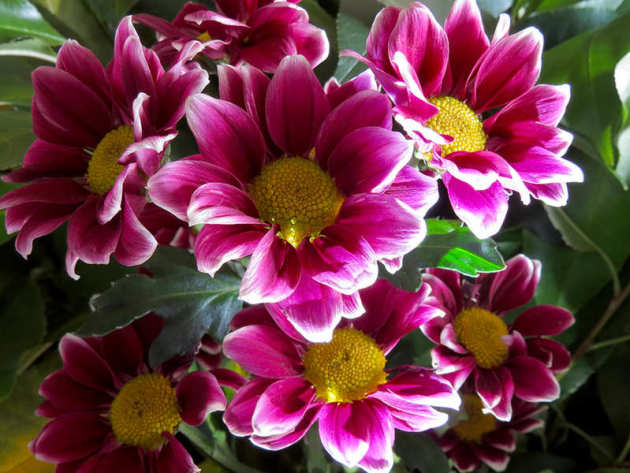
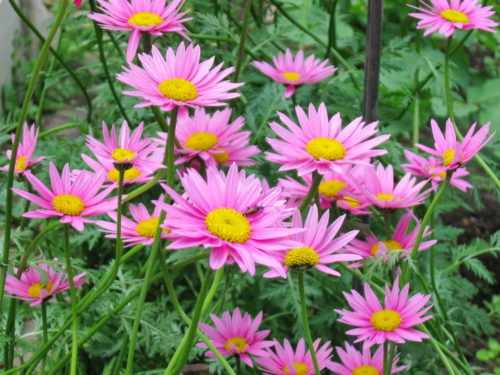
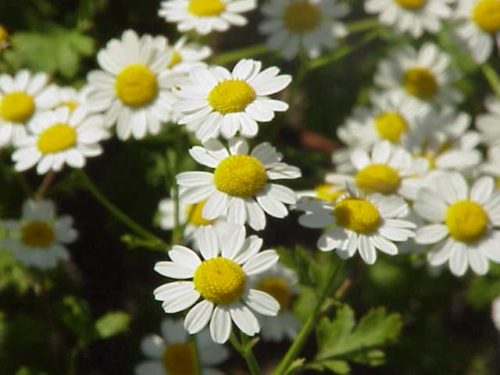
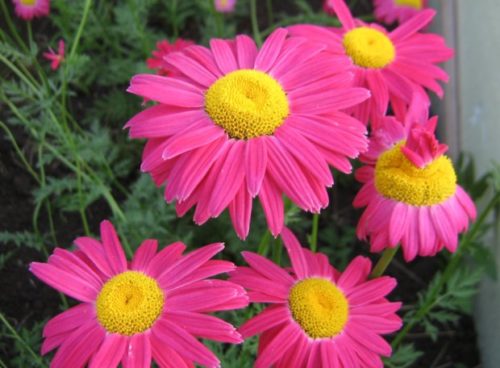
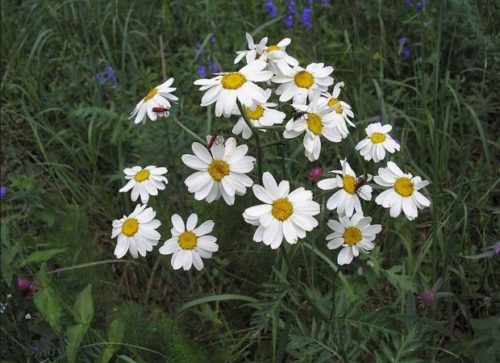
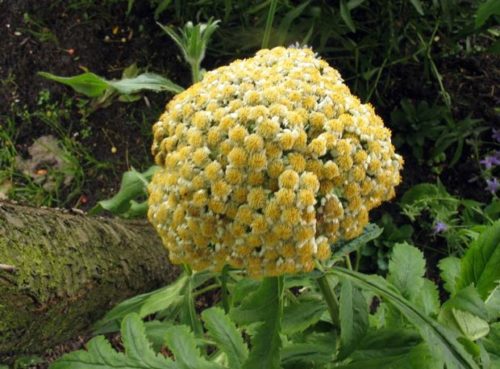
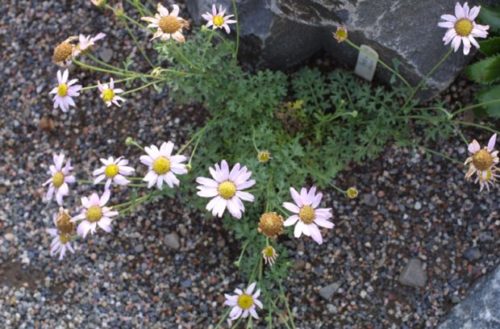
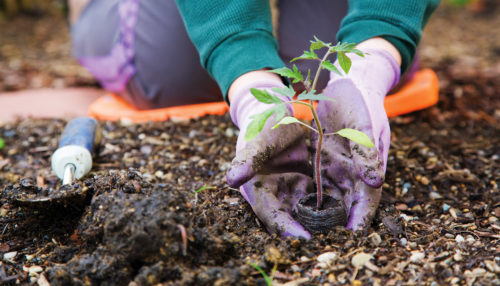
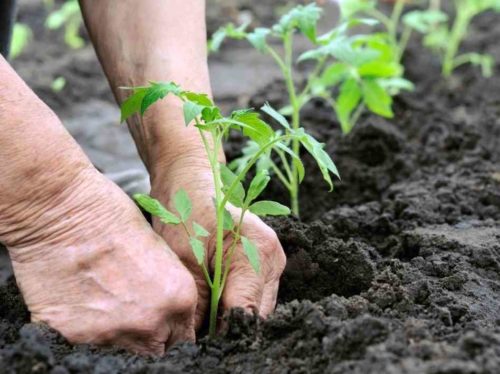
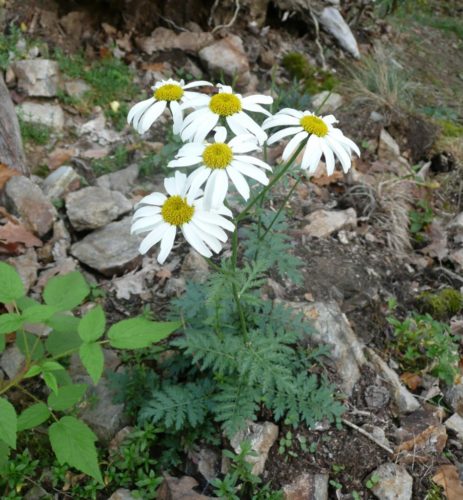
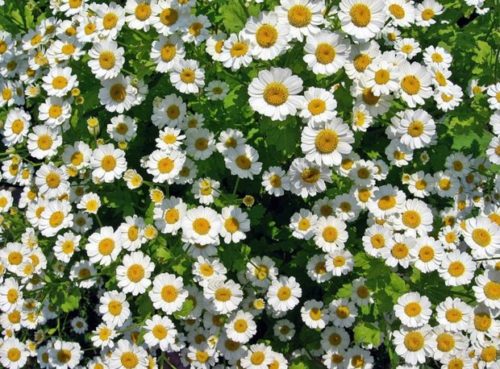
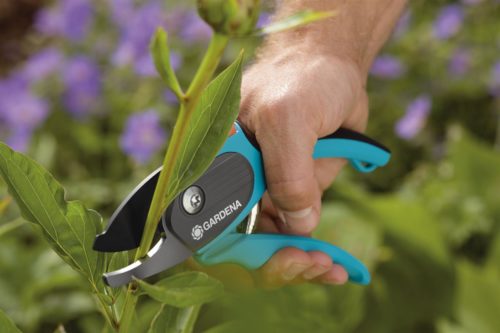
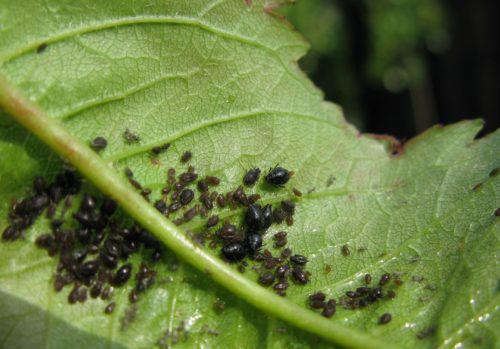
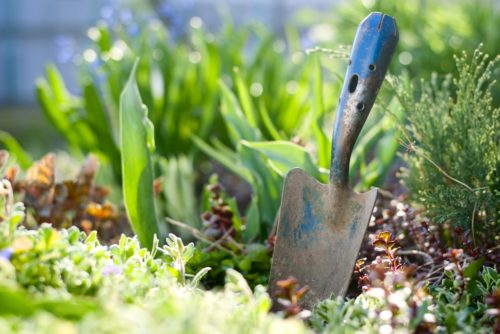
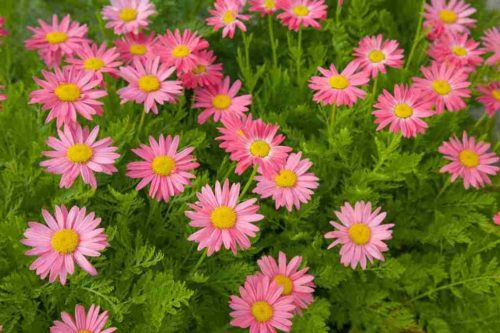
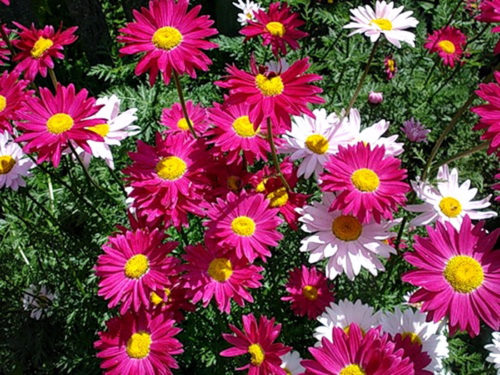
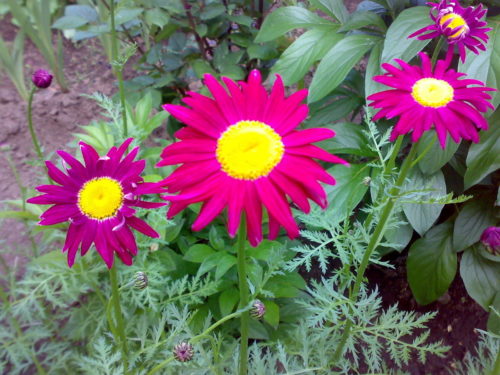
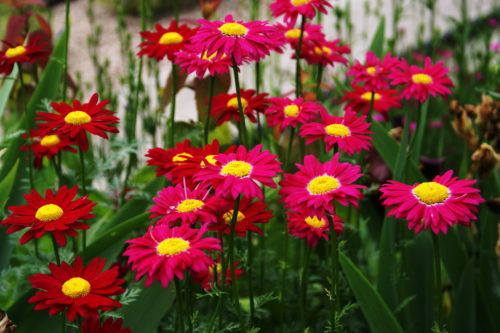


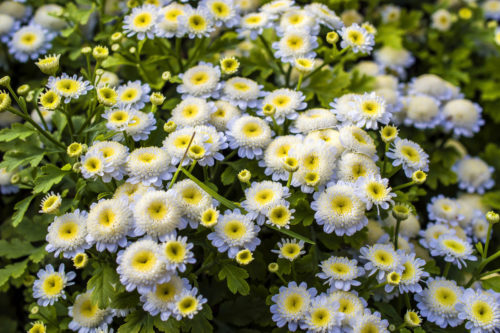












 Start a discussion ...
Start a discussion ...